Jean Morin (artist)
Jean Morin (c.1595 or 1605 – 1650) was a French baroque painter, printmaker, painter, etcher, engraver and publisher.[1]
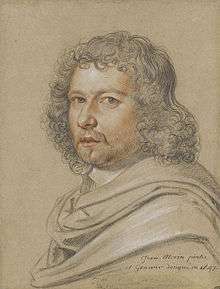
Life
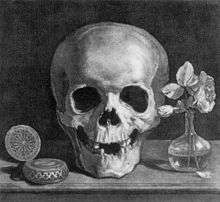
Morin was born and died in Paris. His father Étienne Morin was a master painter who died young (circa 1612-1615). He was married to Marie Oignet (or Houegnet, Vanier, Wanier etc.) who was very likely Flemish. Jean had two sisters: Marie, who never married (1611-1703) and Catherine (near 1610-1672), who in 1631 married the Flemish painter and engraver Matthieu van Plattenberg, called Plattemontagne in France. Van Plattenberg was originally from Antwerp and became a founding member of the Royal Academy of Painting and Sculpture. Their son (and therefore nephew of Jean Morin) was the painter Nicolas de Plattemontagne who studied under Morin and Philippe de Champaigne.[2]
Van Plattenberg and Morin worked together on various publications such as a series of landscapes and marine scenes.[3]
Morin likely never married.[2]
Work
His graphic work consists of 118 plates, which are undated and the chronology of which is unknown. Six plates do not have his signature. The works include:
- 50 portraits
- 34 devotional subjects
- 20 landscapes
- 11 book illustrations
- 3 genre scenes.
Many of these works were made after paintings of leading artists of the time.[2]
Portraits after Philippe de Champaigne

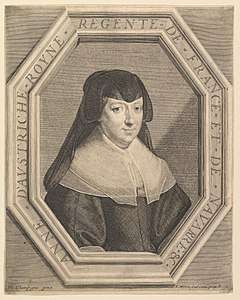 Anne d'Autriche
Anne d'Autriche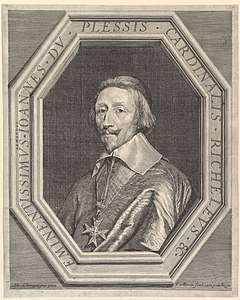

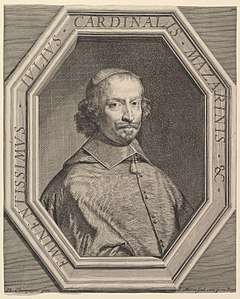
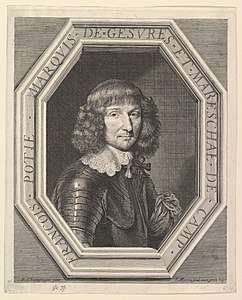 François Potier
François Potier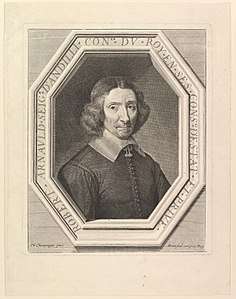 Arnaud d'Andilly
Arnaud d'Andilly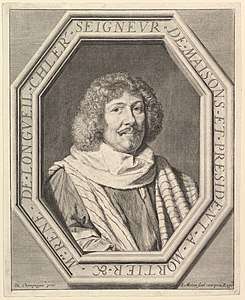 Rene de Longueil
Rene de Longueil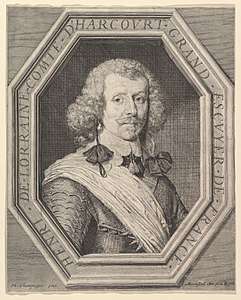 Henri de Lorraine
Henri de Lorraine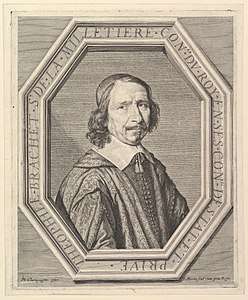 Theophile Brachet de la Milletiere
Theophile Brachet de la Milletiere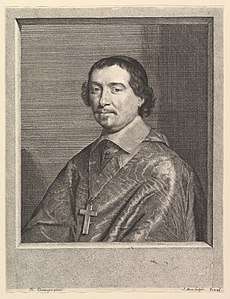 Pierre Bartier, Bishop of Montauban
Pierre Bartier, Bishop of Montauban Antoine Vitre
Antoine Vitre
References
| Wikimedia Commons has media related to Jean Morin. |
- Jean Morin at the Netherlands Institute for Art History (in Dutch)
- Jean A. Mazel, Jean Morin. Catalogue raisonné de l'œuvre gravé de Jean Morin (env. 1605-1650), Paris, éditions de la marquise, 2004 (in French)
- Winter landscape with figures skating on a frozen body of water in a roundel composition; a church and trees in the foreground; a bridge, churches, and windmills beyond at the Metropolitan Museum